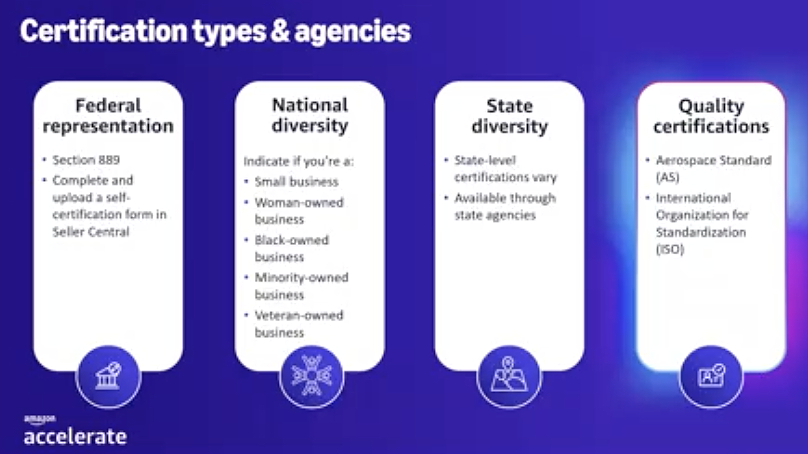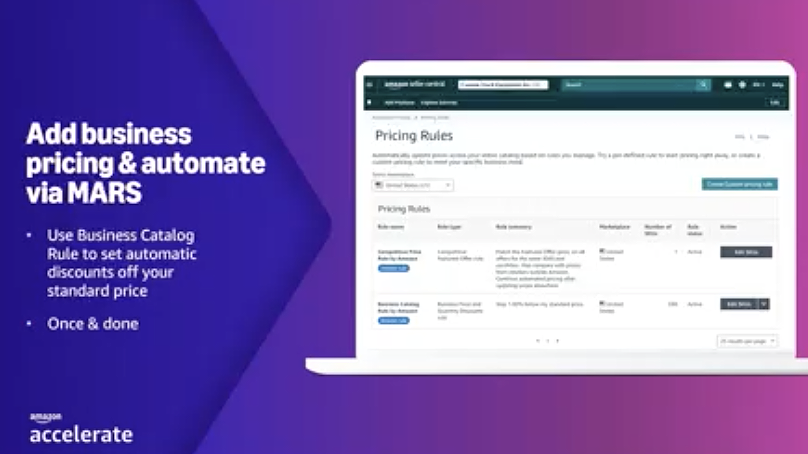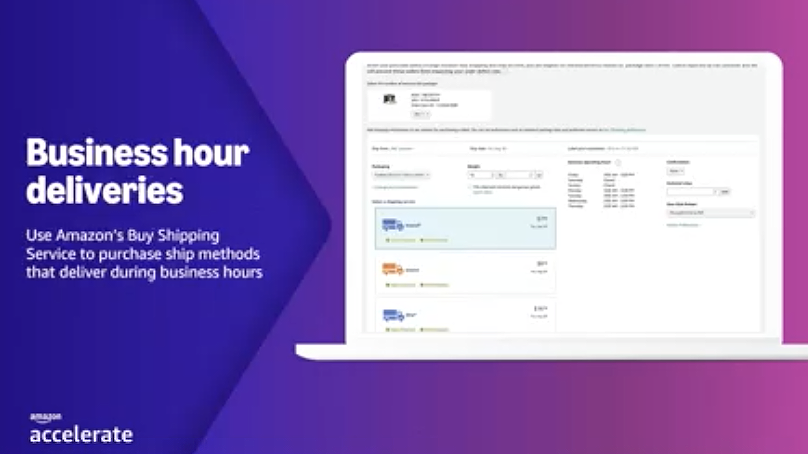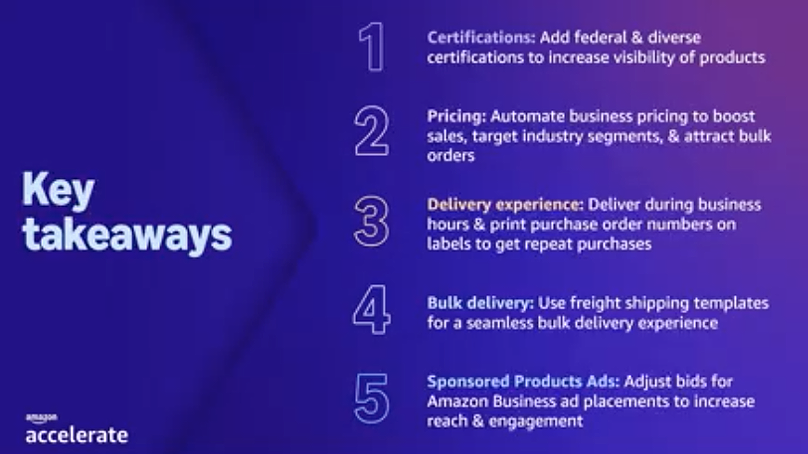Selling to business customers presents unique opportunities to scale your operations and drive revenue growth. During the Amazon Accelerate conference, leaders from Amazon Business—Sean Morat (Segment Leader), Darshi Shary (Product Lead), and Arvind Tyagarajan (Senior Product Manager)—shared invaluable insights on how sellers can tap into the Amazon Business platform to elevate their B2B sales. Whether you’re new to Amazon Business or looking to refine your approach, here are five actionable strategies that can help you succeed in the B2B marketplace.

1. Leverage Certifications for Visibility and Trust
One of the easiest and most effective ways to attract business customers is by adding certifications to your seller profile. Many procurement agencies and businesses have specific diversity or federal requirements when choosing suppliers. Amazon Business allows you to display these certifications on your profile, giving you a competitive edge in niche markets.
For example, in 2023 alone, customers with specific buying policies related to certifications spent over $300 million on Amazon Business. By adding federal or diversity certifications such as woman-owned, minority-owned, or veteran-owned business, you can increase your visibility to procurement managers who filter products based on these criteria. Amazon’s Supplier Gateway tool makes it easy to capture and verify these certifications, allowing you to expand your reach quickly and effectively.

2. Automate Business Pricing for Larger Orders
Business buyers tend to purchase more frequently and in larger quantities than individual consumers—74% more units, in fact. By setting up business-only pricing, you can attract these high-volume buyers, offering them competitive rates that align with their purchasing needs.
One tool Amazon Business offers is Mars, an automated pricing feature that helps sellers maintain competitive pricing across their entire catalog. This automation not only saves time but ensures that your products remain appealing to business customers. Additionally, you can set up quantity discounts, encouraging bulk purchases. Sellers who strategically offer lower prices for larger orders see increased sales while reducing shipping costs and returns.

3. Deliver During Business Hours for Seamless Customer Experience
B2B customers—such as schools, governments, and enterprises—often operate on strict schedules. Delivering a pallet of supplies on a Saturday when the recipient isn’t available can lead to damaged goods, returns, and frustrated customers.
Amazon Business provides a Buy Shipping service to help you manage deliveries during business hours. This service offers insights into customer operating hours and allows you to choose shipping methods that align with these schedules, ensuring smoother deliveries and reducing the risk of missed shipments or product damage. Additionally, freight shipping templates help sellers manage large orders by allowing customers to schedule deliveries at convenient times.

4. Utilize Sponsored Ads to Target Business Customers
Sponsored product ads can significantly boost your product visibility on Amazon. These ads appear during a customer’s search journey, improving your chances of landing in front of potential buyers. However, business customers behave differently from B2C customers, which is why Amazon Business has introduced B2B bid adjustments for sponsored product ads.
With this feature, you can increase your bid for business customers specifically, helping your ads stand out to high-value buyers. In fact, ads targeting Amazon Business customers deliver 2-3x higher return on ad spend compared to general ads. The ability to adjust bids for B2B customers ensures that your marketing budget is being directed toward the right audience.
5. Streamline Bulk Shipping with Freight Shipping Templates
B2B buyers often place large orders that require special handling, such as freight shipping. Amazon’s Freight Shipping Templates allow you to offer customized delivery solutions for larger shipments, taking into account customer needs like loading docks, lift gates, and preferred delivery times.
This system ensures that your freight shipments are handled seamlessly, with direct communication lines between you and the customer to arrange the details. The result? Fewer missed deliveries, lower costs, and happier customers who are likely to return for future purchases.
Key takeaways

Selling to businesses on Amazon presents a tremendous opportunity to grow your sales, increase average order sizes, and reduce operational headaches like returns and delivery issues. By implementing these five strategies—leveraging certifications, automating business pricing, ensuring delivery during business hours, using sponsored ads with B2B bid adjustments, and streamlining bulk shipping—you can unlock the full potential of Amazon Business and drive sustainable, long-term growth.
With over six million business customers actively purchasing on Amazon, the time to act is now. Implement these strategies, and you’ll be well on your way to elevating your B2B sales and expanding your reach within the marketplace.